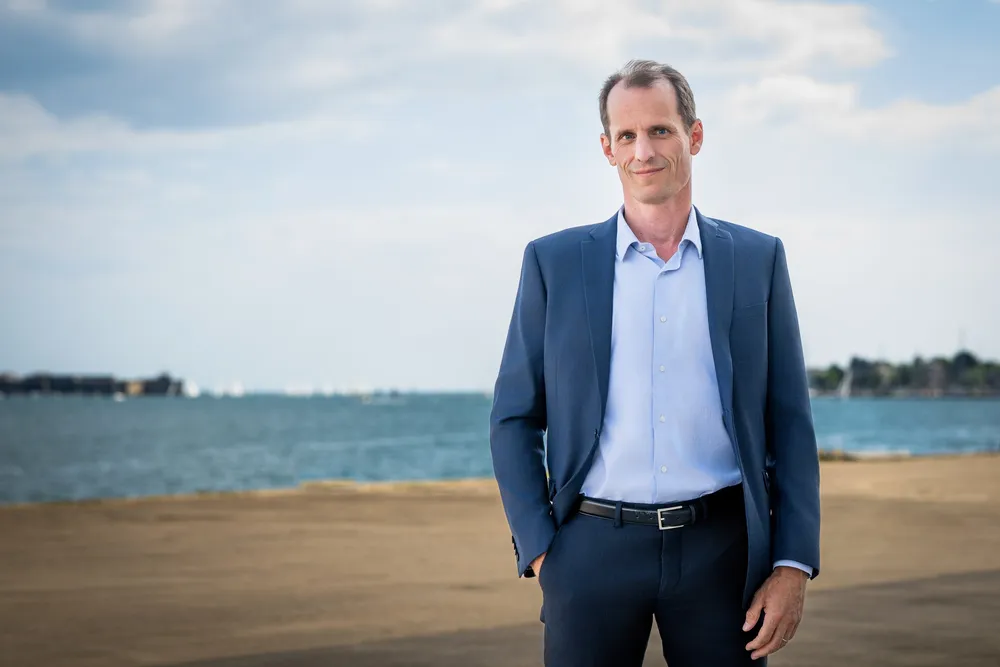Concrete and China: Pioneering floating wind project weighs options
France already hosting diverse variety of floating offshore wind projects, and one looks likely to opt for concrete foundations

German developer BayWa re and Belgian project partner Elicio are keen on using Fgaconcrete foundations in their ground-breaking 250MW Pennavel floating offshore wind farm off the coast of Lorient, in France.
The pair were awarded rights to develop the South Brittany-1 area in France’s AO5 wind tender last year when Pennavel, as the project was named, became the first commercial floating wind farm in the world to be awarded a long-term contract for difference (CfD).
The winning bid, offering a strike price of €88.45/MWh ($101.17/MWh) was considered low by many in the sector as it was submitted against a backdrop of rising supply chain costs and slower than expected maturing of floating wind technology.
Foundations and turbines
Although final decisions on long-lead items are still some years away, bidders had to outline their base case scenarios.
For the Brittany-1 project, preliminary development plans pointed to concrete floating foundation technology and 23MW wind turbines, or bigger.
While project work has so far focused heavily on stakeholder relations, team structuring and environmental impact assessment, early development has strengthened rather than weakened these base case scenarios, according to Pennavel project director Jérôme Hilt.
While BayWa re and Elicio have based their 250MW Pennavel floating offshore wind project off the coast of Lorient on a concrete floaters concept, the partners have stressed that their final decision will depend on technological, industrial and cost factors assessed closer to construction.
“We are working toward this, but of course, we are also studying other alternatives."
The relative advantages and disadvantages of concrete foundations when compared with steel hulls has been a perennial topic of debate within a slowly-maturing floating wind industry.
Advocates of concrete point to advantages in terms of local fabrication, stability, and cost-effectiveness.
Early floater projects featuring concrete foundations include the pioneering 2MW Floatgen demonstrator project in France, using a patented technology developed by BW Ideol.
The Floatgen unit was built in the port of Saint-Nazaire and has been operating ever since its commissioning in 2018. A Bouygues Construction subsidiary developed a light, self-compacting concrete formula to reduce the weight of the structure.
In Spain, Saitec Offshore Technologies used a twin-hull concrete foundation for its 2MW DemoSATH demonstrator, in partnership with RWE and Kansai Electric Power Co.
Turbine speculation
But the Pennavel project is not expected to reach its commercial operation date until 2030-31 and European turbines on this scale could be available by then.
European market leaders Siemens Gamesa and Vestas also have a considerable head start over Chinese competitors when it comes to satisfying certification, warranty and insurance criteria in home markets.
"Our intention is to go ahead with European suppliers if possible and that is part of our base case as well," Hilt said.
"This is not our only option, but it is the one that we want to pursue.
"We are holding discussions with those turbine suppliers to better understand what options they will be developing on the horizon of our project," he added.
The Pennavel project team has also started work on what Hilt calls the "long process" of developing an industrial plan
"We are still in the process of progressing with different options and trying to reduce step-by-step the number of alternatives that we have," Hilt said, adding that ports in the region could look ahead to a pipeline of future opportunities including North Brittany and the Celtic Sea.
AO9 expansion
The South Brittany area is just one of three 250MW floating wind projects that were awarded seabed, offtake and connection rights in 2024.
The other two areas tendered were Narbonnaise-1 — which was won by Ocean Winds and Banque des Territoires — and Gulf of Fos, which went to EDF Renewables and Maple Power.
Extensions to all three areas — South Brittany-2, Narbonnaise-2 and Gulf of Fos-2 — are currently available in France's ongoing AO9 offshore wind tender. If concluded successfully, each zone will provide 750MW of offshore wind capacity.
All three AO9 projects will be supported by 20-year contracts for difference (CfDs) under France’s offshore wind strategy.
Under the French system, winning bidders receive their exclusive seabed concession, a tariff indexed to inflation and a secured grid connection as a one-stop shop.